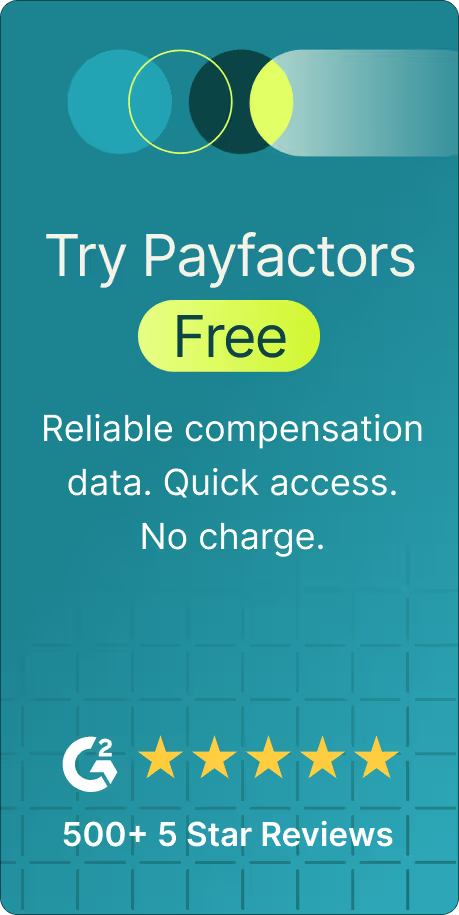Unlimited paid time off (PTO) refers to a benefits policy that businesses can offer their employees. The initial shift towards unlimited PTO took root in the 1970s, coinciding with more flexible work schedules. However, the concept as we understand it today emerged much more recently.
The last twenty years have seen startups, tech companies, and law practices embrace unlimited PTO on a larger scale. The policy's prevalence has only increased in the aftermath of the COVID-19 pandemic, as evidenced by frequent mentions in global news coverage.
Unlimited PTO is steadily becoming an integral part of contemporary company culture. It's not just about the amount of time or vacation days employers offer. A more comprehensive way to view unlimited vacation time or unlimited PTO plans is to conceptualize them as a wellness and well-being initiative for U.S. workers that prioritizes mental health and supports organizations' retention of top talent.
Even before the pandemic, when unlimited PTO began gaining significant traction, the number of employers offering such policies doubled within three years. Amid the peak of COVID-19, more companies from diverse industries, ranging from fast-food giants like McDonald's to engine manufacturers and even police departments, started implementing this policy.
What is unlimited PTO policy?
Unlimited PTO is a leave policy allowing employees to decide the extent of their paid time off, provided it does not negatively impact their work productivity. This policy gets administered via the organization's human resources department.
The underlying premise of this policy is relatively straightforward and mutually beneficial. Greater flexibility reduces employee stress and enhances productivity, benefiting both the individual and the company. Moreover, unlimited PTO simplifies time-off tracking for businesses.
Flexible PTO vs. unlimited PTO
Flexible PTO and unlimited PTO, although seemingly similar, are distinctly different policies. Both provide employees with greater flexibility and autonomy compared to traditional vacation policies. However, flexible PTO limits the duration of leave employees are allowed to take, while unlimited PTO, as the name suggests, doesn't impose such limits.
How does unlimited PTO work?
Rather than starting the work year with a pre-set number of paid leave days, employees with unlimited PTO determine their leave duration as the year progresses. However, employees must submit their leave requests via their human resources management system. The approval or rejection of these requests remains at the manager's discretion.
Unlimited PTO policies vary across companies based on their implementation. Organizations of different sizes might adapt the policy to suit their unique requirements and capabilities. Yet, a common thread in most unlimited PTO policies is the expectation that employees' leave doesn't disrupt their work performance.
Why do companies offer unlimited PTO?
Multiple factors motivate employers to offer unlimited PTO. Primarily, the policy promotes a healthier work-life balance for employees, making them happier and more productive a win-win for the company.
Another aspect highlighting the mutual benefits of unlimited PTO is its simplicity. A single, all-encompassing leave policy is easier for all parties involved. Unlimited PTO allows employees to take time off for any reason vacation, illness, or personal needs. As all leave is valued equally, employers bypass the administrative challenge of tracking the specifics.
Now, let's get into some unlimited PTO pros and cons.
Why do companies offer unlimited PTO?
Multiple factors motivate employers to offer unlimited PTO. Primarily, the policy promotes a healthier work-life balance for employees, making them happier and more productive a win-win for the company.
Another aspect highlighting the mutual benefits of unlimited PTO is its simplicity. A single, all-encompassing leave policy is easier for all parties involved. Unlimited PTO allows employees to take time off for any reason vacation, illness, or personal needs. As all leave is valued equally, employers bypass the administrative challenge of tracking the specifics.
Now, let's get into some unlimited PTO pros and cons.
What are the pros of offering unlimited PTO to your employees?
Benefits for employers:
- Ficially meaningful
Interestingly, unlimited PTO might lead to employees taking fewer days off, bringing about an unexpected ficial benefit. Furthermore, unlimited PTO prevents employees from accruing unused time off, eliminating any ficial obligation on the part of the employers to pay out for these unused days if an employee departs the company.
- Makes a great recruiting tool
Unlimited PTO has become a potent recruitment buzzword. By offering this policy, smaller or lesser-known companies create an appealing narrative around their work culture, aligning themselves with the forward-thinking practices adopted by tech behemoths and other successful enterprises.
- Boosts productivity
The potential of unlimited PTO to alleviate stress and promote work-life balance often boosts employees' productivity. By facilitating a healthier lifestyle for workers, this policy often directly influences their efficiency at work, leading to higher outputs.
- Develops trust among employees
Trust plays a vital role in fostering employees' commitment to their roles. Implementing an unlimited PTO policy demonstrates that employers trust employees to manage their workloads responsibly, bolstering employee-employer trust.
- Saves administration time
An unlimited PTO policy is a boon for the Human Resources department. It negates the need to track the reasoning behind each leave request, whether for personal reasons, illness, or bereavement. Without a cap on time-off hours, tracking becomes less cumbersome for HR, resulting in saved time and money.
Disadvantages for employees:
- Employees feel pressured to work
Unlimited PTO theoretically allows employees to take as much time off as needed, provided their productivity remains consistent. However, the freedom sometimes inadvertently creates a sense of discomfort, with some employees fearing they might seem uncommitted or appear to be exploiting the system if they take too much time off.
- It's not really unlimited
Despite the label, unlimited PTO is not without constraints. Like traditional PTO policies, employers reserve the right to reject time-off requests, particularly if an employee is underperforming or seems to be taking excessive time off.
- Absent coworkers
With employees potentially taking more frequent time off, coordinating teamwork and collaboration sometimes become more complicated.
4 other types of PTO
Here are four alternative PTO policies that differentiate from unlimited PTO.
- Discretionary PTO
In this model, employees decide when to take time off if it does not drastically affect their work schedule or disrupt their colleagues.
- Floating holidays
Beyond the standard annual holidays, employees with floating holidays take additional days off, which don't necessarily coincide with public holidays.
- Flexible time off
Comparing FTO vs PTO, these policies are similar in many ways but usually have a cap. Employees use their FTO for vacations or sick days without the need for prior accrual of time.
- Paid holidays
The U.S. federal government acknowledges several annual paid holidays. Most U.S. companies align with these designated days and give their employees time off, like Labor Day.
How to successfully transition to unlimited PTO
The move from traditional to unlimited PTO often seems daunting, but it is usually a smooth transition with the right approach. Companies interested in making this change must carefully review local laws and specific requirements before embracing an unlimited PTO model.
Here's a simple guide to help you shift from a conventional benefit policy to unlimited PTO smoothly:
- Reward staff for unused time off accrued prior to transitioning to the new PTO policy
- Track accumulated time off and compensate for the remaining balance before an employee is terminated
- Allow a period of time in which employees can use the accumulated time before the new policy is implemented
Tips for implementing unlimited PTO effectively in your company
Following these tips once your company has transitioned to ensure the unlimited PTO policy benefits everyone.
- Educate employees about the new PTO policy in the organization
- Establish a limit on the number of leave days to be taken at once
- Develop a formal written policy for unlimited PTO to serve as a reference for employees
- Ensure that employees give at least two weeks' notice
- Establish a vacation approval process
- Employ a tool to manage and monitor unlimited PTO
What is the average of unlimited PTO employees take?
The amount of unlimited PTO taken by employees varies by company. In the U.S., the traditional PTO system grants an average of 10 to 14 days off. Interestingly, some studies suggest employees take fewer days off under an unlimited PTO policy.
What should you do if an employee abuses of unlimited PTO?
One potential downside of unlimited PTO is that employees sometimes misuse it. It's smart for HR teams to explain the policy, including the consequences of misuse, to all staff. If misuse does occur, it is wise to seek legal advice.
Is unlimited PTO right for your company?
The trend toward unlimited PTO is rising in the current job market, proving attractive to employers and employees. Implementing such a policy leads to cost savings for the company, improved hiring success, enhanced productivity, trust building among the team, and time-saving in administrative work.
On the employee side, potential perks encompass superior time management, enriched team communication, balanced work-life dynamics, and high performance.
Before embracing an unlimited PTO policy, organizations must contemplate the pros and cons from their standpoint as well as from the perspective of their staff. Compliance with state and federal laws is also a crucial consideration.
FAQs around unlimited PTO
- Is it necessary to compensate time off in case of sick leave?
The decision to include sick leave in the definition of unlimited PTO varies among companies. If your business includes sick leave under unlimited PTO, typical of most such policies, then the time off usually comes with pay. Ultimately, the choice is your company's to make.
- Is unlimited PTO better than accrued PTO?
Both policies have advantages and disadvantages, making it crucial to identify what's best for your company and your employees. Unlimited PTO allows employees to manage their time off, fostering trust and job satisfaction. Conversely, accrued PTO provides compensation, which unlimited PTO does not, potentially leading to pay loss.
The suitability of unlimited PTO for your company primarily depends on your business nature. Payscale's 2023 Compensation Best Practices Report offers more insights into whether this approach is the right choice for your organization. Check it out today!





.avif)
